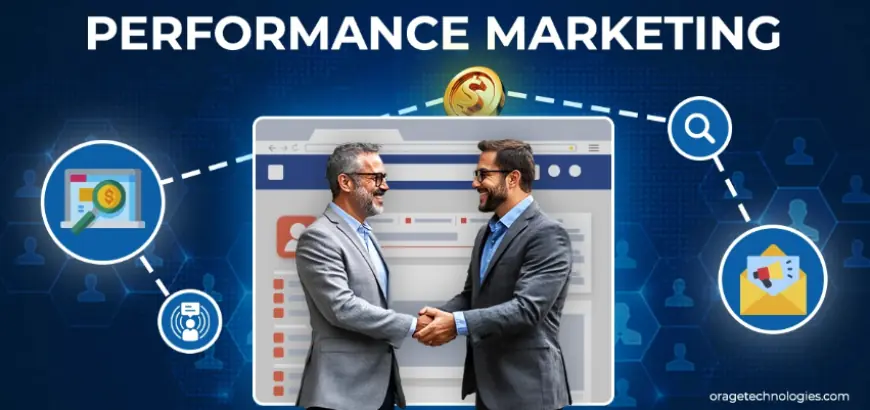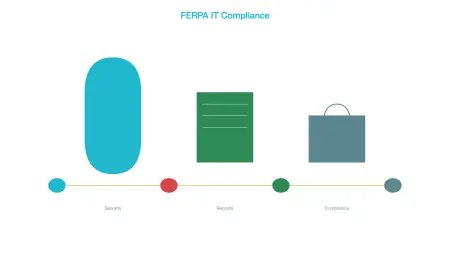Performance Marketing: Driving Advertising Success in 2025
Discover how performance marketing shapes advertising success in 2025. This data-driven strategy delivers measurable results, optimizes budgets, and boosts ROI, making it the smarter choice for businesses of all sizes.

Performance Marketing is an innovative approach to advertising that focuses on measurable results rather than traditional advertising that emphasizes reach. Traditional advertising gives importance to reach or impressions, while performance marketing is designed to drive specific actions – clicks, leads or sales – enabling the business only to pay for truly measurable outcomes. In this blog post we will share information to show how performance marketing drives the success of advertising and share information to answer some of the key questions pertaining to how businesses can harness the power of performance marketing. Performance Marketing strategically uses data to ensure brands can take advantage of advertising opportunities to ensure campaigns are optimized, audiences are targeted and ultimately to achieve results that outperform the competition in today's highly competitive digital environment.
What Is Performance Marketing, and How Important Is it?
Performance Marketing is defined as an advertising model where brands are only billed when their desired actions — clicks, signups, purchases — take place. In a space where there is no accountability, performance marketing and other digital strategies provide marketers with a vehicle for measuring ROI accurately. By 2025, brands are going to need to be leveraging performance marketing as consumers will be inundated with ads, and performance marketing is all about pulling ads to specific consumer segments and delivering more targeted, relevant messages. As a result, traditional advertising and marketing creates uncertainty around the impact of campaigns, while performance marketing provides concrete ways to measure campaigns. For instance, an e-commerce brand can stop a poorly performing ad and push the funds into a higher performing ad, leading to lower expense and improved performance results. Performance marketing also answers the call for personalized ads from consumers since these ads leverage data to create unique messaging. More relevancy for consumers leads to more engagement and trust, solidifying performance marketing as necessary for overall business success.
How Does Performance Marketing Work?
Performance marketing is built on a pay-for-performance model. Advertisers work with affiliates, publishers, or even platforms such as Google Ads to promote products or services while paying those people only when a predetermined goal is met, such as leads or sales. This sort of advertising covers everything from affiliate marketing, to pay-per-click (PPC) ads, to social media ads, to native advertising. The business identifies goals, such as 1,500 leads, and then determines measurable objectives, such as cost-per-click (CPC) and cost-per-acquisition (CPA). They will then use real-time tracking tools to see how their object is performing, which gives a marketer the ability to modify or cover ad creatives to get the best out of it, or change who you are targeting. A subscription service paying affiliates for only confirmed fits used to get the relevant signals how to use their budget. Performance marketing is distinctive because it allows a business to test so many channels so quickly and scale on what works best for them. Also, the use of AI is optimizing the ability to target people who are most likely to convert on the ads they see.
Why Is Performance Marketing Cost-Effective?
The reason why performance marketing is so cost effective is because all costs for campaign spend is tied to results. In traditional advertising campaigns, businesses would pay upfront costs to run ads without guaranteed outcomes. Performance marketing drastically reduces wasted spending because marketers only pay for actions that have been completed. This allows small businesses and brands to reach their target demographic without competing with larger brands for attention, as they can focus solely on the audience with the highest conversion rate. Moreover, with a data-driven emphasis on campaign optimization, marketers can constantly analyze the data and metrics for every aspect of their campaign, including click-through rates (CTR), conversion rates, etc., and use that data to continuously scale and improve campaign efficiency in real-time. Starting in 2025, performance marketers will utilize predictive analytics to forecast the better-performing strategies, which will also help reduce costs. For example, if a skincare brand finds their ads on Instagram convert better than their ads for search, they will more likely shift their budget towards that platform. Furthermore, the scalability of performance marketing is a major benefit as well. When brands find success with a campaign, they can expand the campaign with confidence as the performance marketing model diminishes the risk of increased costs. The upfront cost and uncertain payouts of traditional advertising simply cannot compare.
What Are the Major Channels of Performance Marketing in 2025?
Performance marketing uses several channels with different strengths. First, affiliate marketing connects businesses with partners to promote products and earn commissions on sales made. Because it is often performance based, affiliate is strong in driving sales. Pay-per-click advertising includes search engines such as Google Ads allow businesses to bid on keywords to get traffic only paying when the keyword is clicked, so it is a very valuable tool especially in targeted on-deck traffic. When we think about social media, platforms like, Instagram, TikTok, and LinkedIn offer sophisticated targeting options reach the specific demographic or behavior based on the app using artificial intelligence. After native advertising, email marketing is powerful because it can be very personalized and then you can analyze the results to assess effectiveness using metrics like-open rate before conversions. Each of the channels analyzes and optimizes performance based on data- social media channels including the ability to get exact targeting through the use of AI and analytic capabilities in the affiliate networks. When these channels are used together, they provide a substantial performance marketing strategy.
How to Get Started with Performance Marketing as a Business
It can be simple to create and launch a performance marketing campaign provided you have a clear and sound strategy. The first step is to define your goals—are you looking for more leads, traffic or sales? You need to have clear strategic goals to guide you in setting up your campaign. Next, identify channels that are relevant to your audience. For example, a B2C company could use Instagram Ads as a primary medium, while a B2B company might find LinkedIn ads more relevant. Then you need to decide who you want to work with. If this is affiliate performance marketing you might be considering networks like Shareasale or an ad platform like Google Ads. Start small and experiment with the budget to find some successful strategies. Use Google Analytics for KPI tracking. For example - if you run an online store, you might want to test the 20 different designs you have to see what converts best. Next, optimization of campaigns is the key to success in performance marketing. Performance marketing is all about testing - trying new audiences, new creatives or new channels to see what works best over time.
What are the potential challenges for companies?
Performance marketing provides a measurable and trackable form of marketing—but challenges arise. First, companies can face data suffocation if they are tracking various metrics. Focus on tracking KPIs that are closely linked to your original goals, such as CPA (Cost-per-Acquisition) for conversion-driven campaigns. Second, ad fatigue can happen when consumers start ignoring ads due to the repetitiveness of your campaigns. You can avoid ad fatigue by refreshing your creatives and trying different formats (such as video ads). High competition can drive up channels where you are bidding (for example PPC), which may increase your costs. Optimize your bids and identify niche target audiences to be more efficient. Finally, privacy regulations, such as GDPR and CCPA, require companies to comply with regulations in these markets. In 2025, it is imperative to be transparent; using tracking tools that are compliant with privacy regulations is crucial to maintaining consumer trust, as is the ability to clearly communicate where and how data from the consumer is being used.
Why Is Performance Marketing the Future of Advertising?
Performance marketing meets the criteria for what consumers will expect from advertisers in 2025, as consumers demand more relevant, personalized ads. The data-driven framework of performance marketing drives the implementation of campaigns that are targeting with pinpoint accuracy. The performance marketing strategy is cost effective and makes it available to companies of all sizes, from start-ups to large corporations. Upper levels of efficiency are made possible by the continued implementation of technology, such as AI and automation, to drive performance marketing. Performance marketing universally allows for increased efficiency, resourcing unique campaigns experience for each consumer and allows for the real-time building of up and run campaigns. In the future, performance marketing can incorporate emerging technology of the day, whether it be ads in a virtual reality experience or voice activated by a smart device. With the future being unpredictable, performance marketing will take every advantage of the capabilities of marketing technology in order to remain cutting-edge and competitive. Being a measurable, high return on investment marketing source, performance marketing confirms itself the “future of advertising.”
Frequently Asked Questions About Performance Marketing
Q: How does performance marketing differ from traditional advertising?
Performance marketing focuses on measurable actions like clicks or sales, with payment tied to results, unlike traditional ads that emphasize awareness and charge upfront.
Q: Is performance marketing suitable for small businesses?
Yes, its pay-for-performance model allows small businesses to compete by targeting high-ROI campaigns, regardless of budget size.
Q: Which metrics should businesses track?
Monitor KPIs like CPC, CPA, CTR, and ROI, selecting those that align with your goals, such as conversions for sales-focused campaigns.
Q: Can performance marketing work for B2B companies?
Absolutely. B2B firms use it to generate leads or drive sign-ups through targeted channels like LinkedIn or email marketing.
Conclusion
Performance marketing drives advertising success in 2025 by delivering measurable results, cost efficiency, and adaptability. Its data-driven strategies ensure businesses maximize ROI while meeting consumer demands for relevance. By mastering its mechanics, leveraging diverse channels, and addressing challenges, companies can unlock its full potential. Whether you’re a startup or a global brand, performance marketing offers a smarter way to advertise, paving the way for success in a dynamic digital world.
What's Your Reaction?
 Like
0
Like
0
 Dislike
0
Dislike
0
 Love
0
Love
0
 Funny
0
Funny
0
 Angry
0
Angry
0
 Sad
0
Sad
0
 Wow
0
Wow
0


















































